Community Work: Andromeda Galaxy
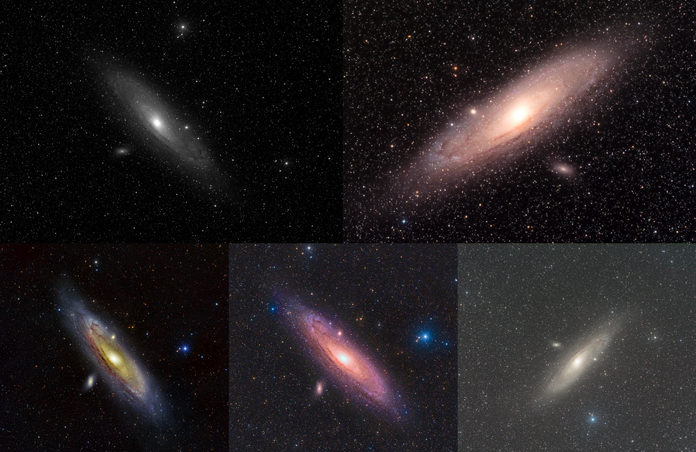
The Andromeda Galaxy, also known as Messier 31, M31, or NGC 224, is a barred spiral galaxy, located approximately 2.5 million light-years (770 kiloparsecs) from Earth: the nearest major galaxy to the Milky Way.
This spiral galaxy, like the Milky Way, contains a concentrated bulge of matter in the middle, surrounded by a disk of gas, dust, and stars and an immense halo.
The virial mass of the Andromeda Galaxy is of the same order of magnitude as that of the Milky Way, at 1 trillion solar masses. The mass of either galaxy is difficult to estimate with any accuracy, but it was long thought that the Andromeda Galaxy is more massive than the Milky Way by a margin of some 25% to 50%.
Andromeda Galaxy by Ian Howarth
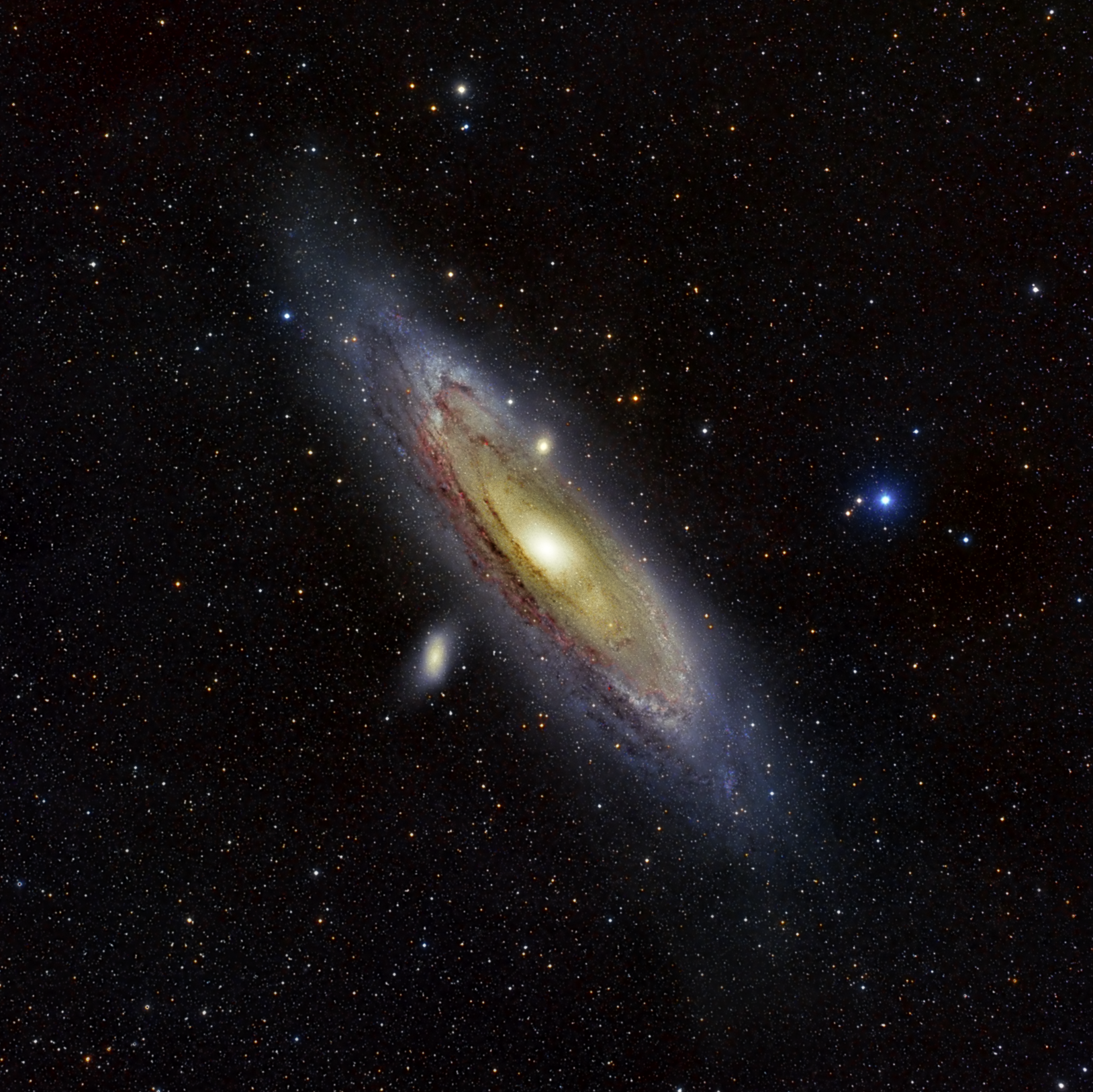
The Andromeda galaxy is the brightest galaxy you can see. The Andromeda Galaxy's mass is estimated to be around 1.76 times that of the Milky Way Galaxy.
Telescope: SPA - 1 (Takahashi FSQ-106ED 106 mm)
Filters: L, R, G, B
Processing: Pixinsight
Andromeda Galaxy by Kush Chandaria
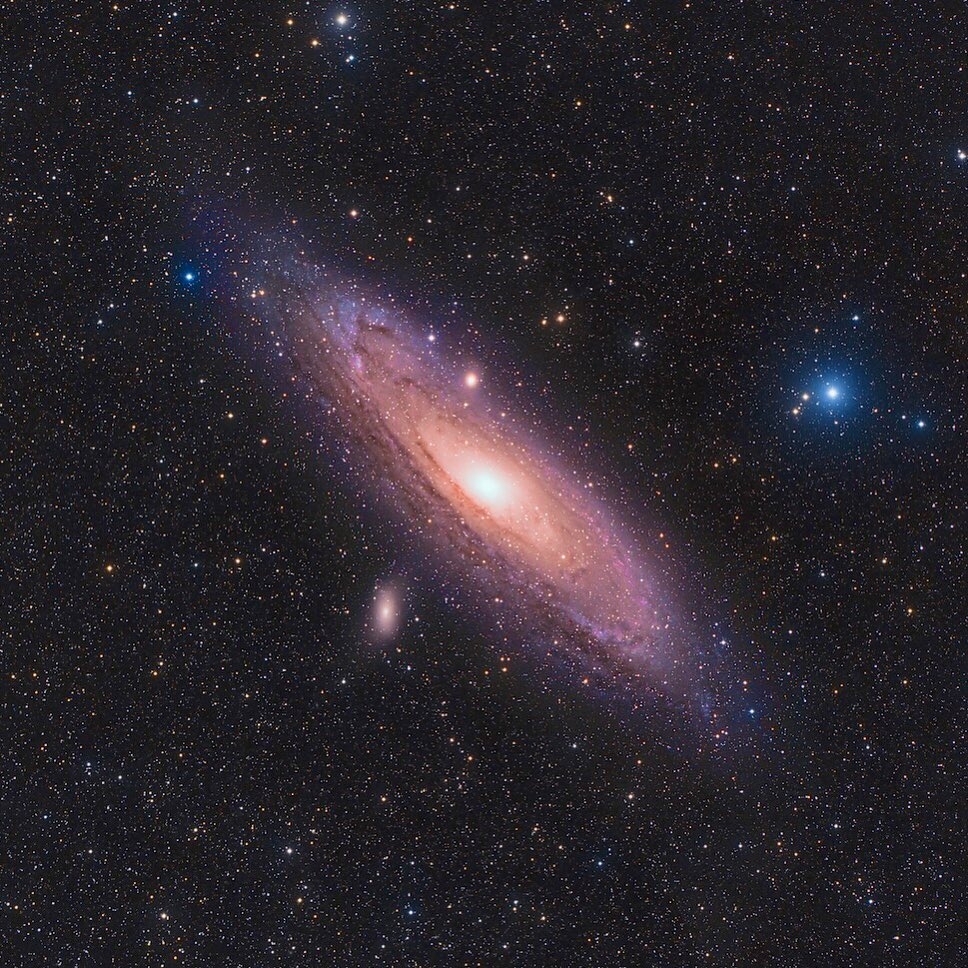
M31 - The Andromeda Galaxy!! Shot in LRGB.
1x600s L
1x600s R
1x600s G
1x600s B
Total Integration - 40mins
Telescope: SPA-2 (Officina Stellare 70cm)
Filters: L R G B
Processing: Processed in Pixinsight and Photoshop.
Andromeda Galaxy by Alexander Curry
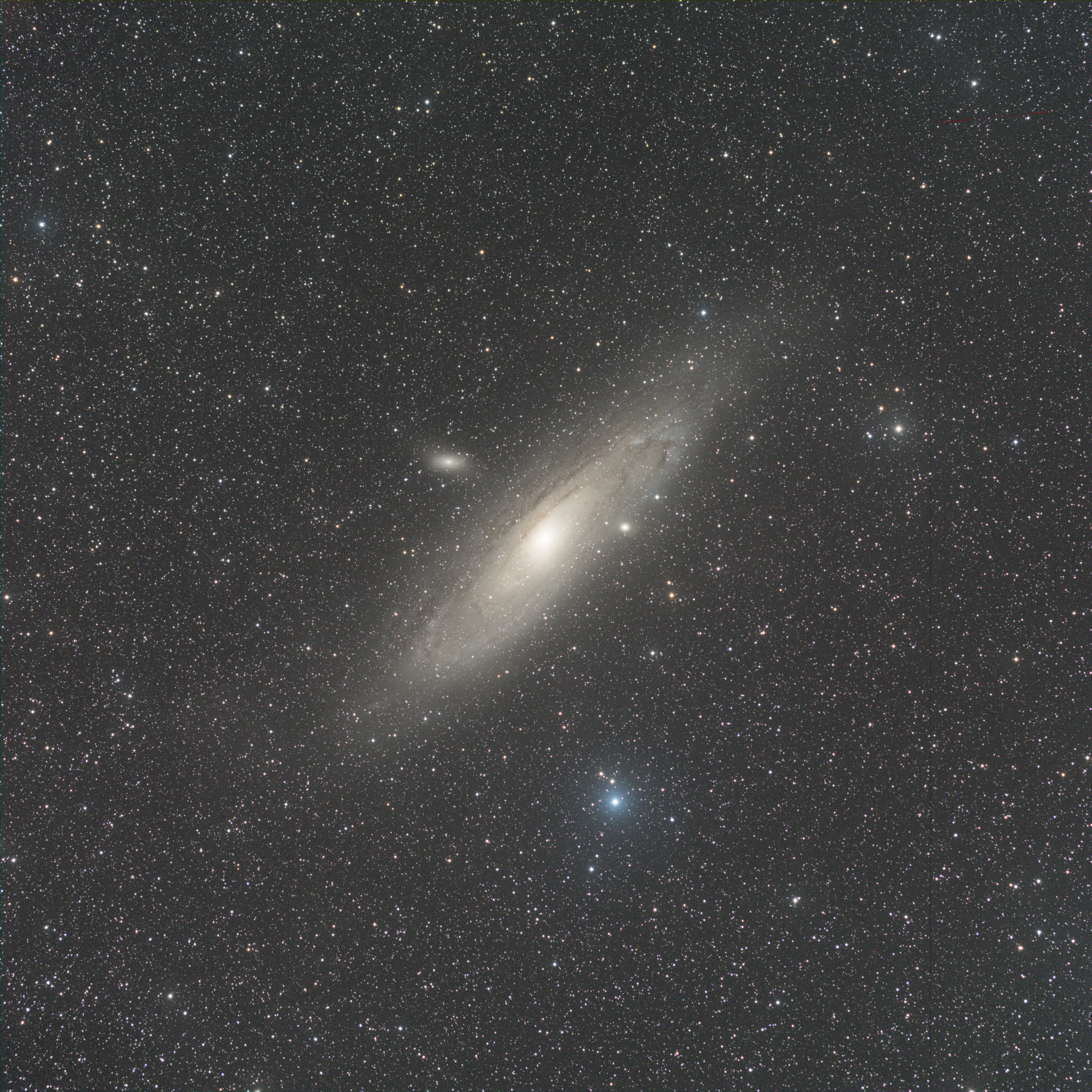
A single image run of the Andromeda Galaxy using an observing request template
Great results from the SPA-3 Telescope of the Andromeda Galaxy considering the total integration time is just 12 minutes
1 x 180s LRGB
Telescope: SPA - 3 (Takahashi FSQ-106EDX4 106 mm)
Filters: L R G B
Processing: Pixsinsight
Andromeda Galaxy by Stefan Asp

This is my very first image with Telescope Live, SPA-3 and post-processing in PixInsight.
Telescope: SPA-3 (Takahashi FSQ-106EDX4)
Filters: L, R, G, B
Processing: PixInsight
Andromeda Galaxy by Rip Smith
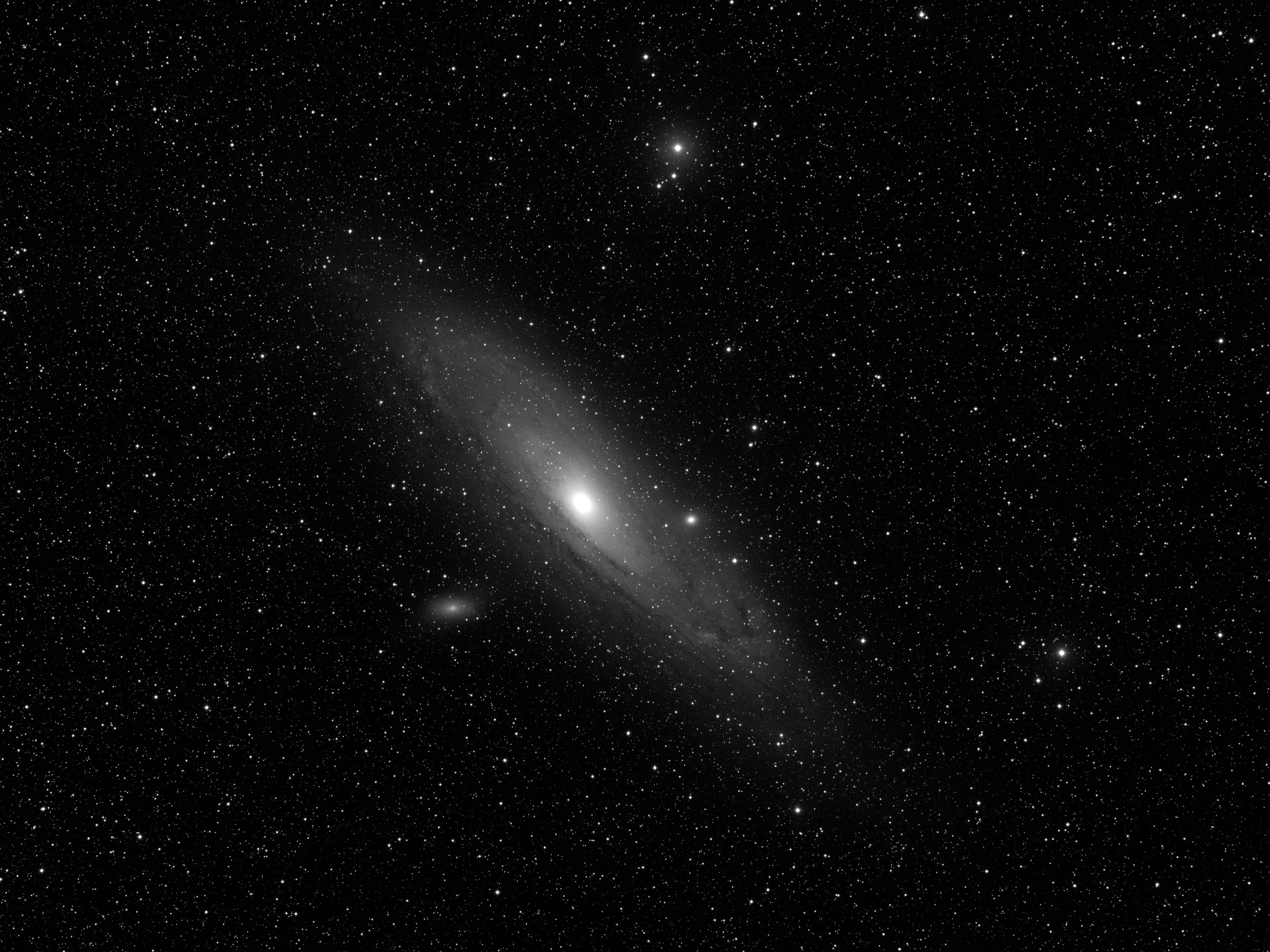
My first image on Telescope.live. A great learning experience and I am quite pleased with the image.
Telescope: SPA-3 (Takahashi FSQ-106EDX4)
Filters: R-G-B
Processing: FitsLiberator + Photoshop
How to see the Andromeda Galaxy
The Andromeda Galaxy is the most distant thing you can see with your eye alone and can be seen in our sky for much of every year. Every August, it’s ascending in the sky during the evening hours. To the naked eye, it looks like a fuzzy patch.
With larger telescopes, it is possible to see a lot of globular clusters and HII regions in the galaxy. In the southwestern part of Andromeda Galaxy lies NGC 206, a stellar association that is visible in medium to large telescopes.
An amateur telescope can reveal Andromeda's disk, some of its brightest globular clusters, dark dust lanes and the large star cloud NGC 206.
Andromeda Galaxy can be seen at its best view using our telescopes located in Spain.
Observe Andromeda Galaxy with a Wide-Field Telescope located in Spain
- 14 min exposure for 16 credits
- 1h 20min exposure for 120 credits
Have you spotted Andromeda galaxy using Telescope Live's telescope yet? Post your pictures in our Gallery
